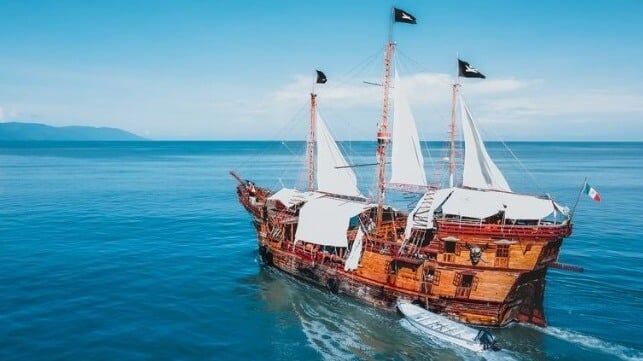Shifting focus to Asia with demand growth, new output from Indonesia
To take FID for 2nd Mozambique floating LNG facility by year-end
JOGMEC deal sought to supply Japan diversified LNG with flexibility
Italy’s Eni aims to boost its contracted LNG portfolio to around 18 million metric tons/year by 2027 and expand its market penetration in Asia, with plans to also double its LNG shipping fleet, Cristian Signoretto, deputy chief operating officer of natural resources, told S&P Global Commodity Insights.
The move comes as Eni sees growing LNG demand, particularly in Asia, accelerated by the region’s energy transition toward LNG from coal, said Signoretto, who is also director of the company’s global gas and LNG portfolio.
“We really think gas is a very important transition fuel for making sure that the world copes with the energy transition and with the security of supply,” Signoretto said in an Oct. 6 interview with Commodity Insights on the sidelines of the LNG Producer Consumer Conference 2024 in Hiroshima.
“So having said that, when it comes to LNG, we aim to grow our LNG portfolio to around 18 million tons [per year] contracted by 2027,” he said, adding that Eni has contracted 13 MMt/year to date. He said that “on the water…we are around 9 million, 10 million metric tons [per year] because there are some contracted volumes that will start up in the next few years.”
Shifting east
Eni currently trades 30% of its volume in the east of Suez region, with the balance being marketed in the Atlantic Basin. This split will eventually shift to a 50:50 ratio by the end of this decade, with an increased focus on Mozambique and Indonesian developments, Signoretto said.
“We want an anchor market in Europe, but shifting this to Asia in time and having three sources of supply, Middle East, Atlantic and Pacific allows us to also optimize the portfolio and to extract even further value,” he said.
“This is a bit of a trend, which is a consequence of the new, I would say, buying behavior, which are coming from buyers.”
In line with its expected growth in LNG trading volume, Eni also plans to boost its LNG shipping fleet.
“So we’re actually more than doubling our fleet in the next five years in order to manage all these volumes,” Signoretto said.
Mozambique, Indonesia
In Mozambique, Signoretto said that Eni plans to take a final investment decision for the second floating LNG unit at the Coral North project by the end of 2024, with an eye to “seeing the first LNG by the end of this decade.”
The second FLNG unit is going to be “a carbon copy of the first one,” known as the Coral South, with a 3.4 MMt/year capacity, Signoretto said. But he added that this will be optimized allowing it to produce slightly more than the first one at 3.7 MMt/year, with Eni expecting to lift about 1.8 MMt/year of LNG for its equity entitlement.
In Indonesia, Eni received a plan of development from the Indonesian government on the Geng North and Gehem fields in August. Under the plan, the two fields will create a new northern hub, in the Kutei Basin. Jakarta has also approved the POD for the Gendalo and Gandang fields.
Eni has said it plans to establish production of about 2 Bcf/d of gas and 80,000 b/d of condensates in the East Kalimantan region, both for domestic and international markets, leveraging synergies with existing facilities such as the Bontang LNG plant and the Jangkrik floating production unit.
Signoretto said Eni plans for first new LNG from the southern part to be available by the end of 2027, which will be followed by the start of new LNG production from the northern hub by 2028.
JOGMEC deal
At Hiroshima, Eni signed a memorandum of cooperation Oct. 6 with state-owned Japan Organization for Metals and Energy Security on collaboration in the gas and LNG field to increase diversification of supply sources, includingEni’s LNG supply opportunities with regard to Japan and the support of Japanese financial institutions to Mozambique’s Coral North project.
The cooperation aims to help Japan diversify its supply sources, with Eni bringing LNG from “a different set of producing countries instead of the usual Australia, Qatar or the US,” Signoretto said.
It also includes the idea of Japan signing “a new long-term agreement,” which takes into consideration the need to have a stable supply for developing the upstream project with “some flexibility to make sure that in case of disruption of the LNG market or extra need of gas for the country,” he said.
“I would say, transit from diversified countries from the usual countries that Japan buys LNG and built-in flexibility in order to cope with also the situation of disruption,” he added. “So that’s the idea that we have to develop.”
Winter outlook
Asked to comment on this winter’s outlook, Signoretto said: “I think clearly, a normal winter, even if without considering La Nina, a normal winter, we will probably add around 10 Bcm, 12 Bcm of demand of extra demand into Europe.”
“And this, coupled with the fact that the Russian flows [via Ukraine] might be ending … will bring away another 3, 4 Bcm. So we’re talking about 15 Bcm of extra somehow supply-demand gap that we are seeing,” he said, adding that Europe is still “ready to cope with the winter” given a nearly full gas storage level.
“So a cold winter and maybe also a demand growth in Asia might put some pressure into the supply-demand of Europe in general,” Signoretto added: “And that’s why I think we have seen in the last couple of months a bit of a volatility in the market.”
Source: Platts









